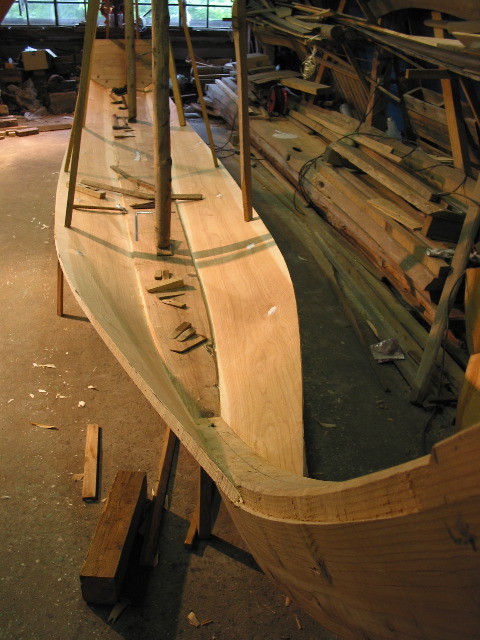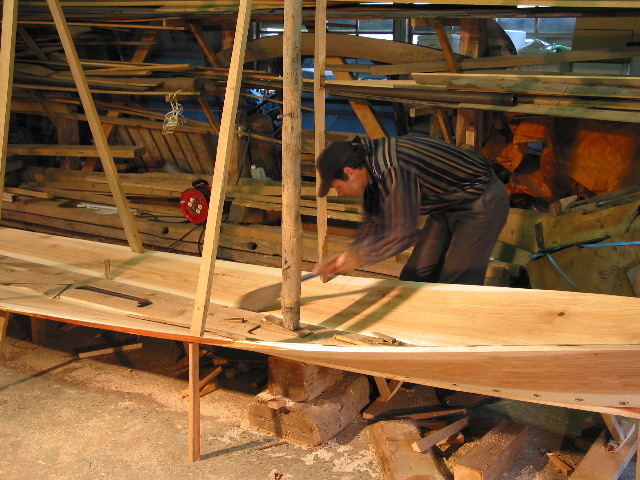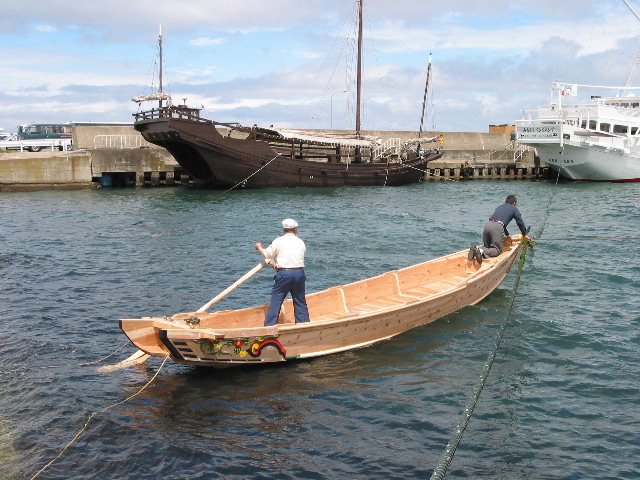Shimaihagi
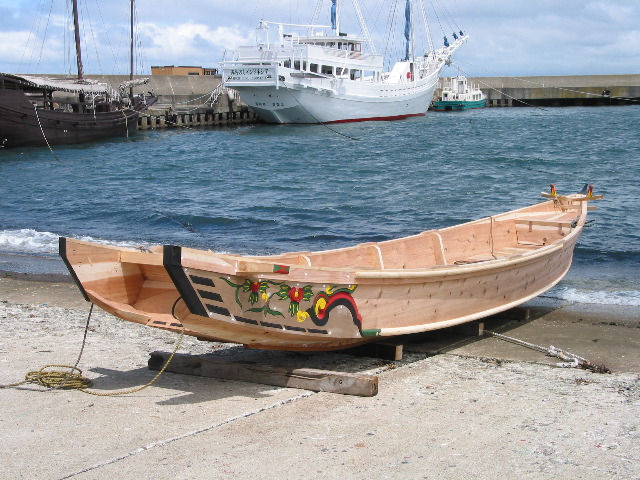
The shimaihagi is a type of inshore fishing boat from the Tohoku region of northern Japan. The name means, literally, "four boards put together" referring to the planking. I built this boat in the summer of 2003 working with Mr. Seizo Ando, the last boat builder of the region. The project was funded by the Freeman Foundation in cooperation with the Michinoku Traditional Wooden Boat Museum (Michinoku Hoppo Gyosen Hakubutsukan).
Mr. Ando had not built a boat in over twenty years, and because he used no plans whatsoever, relying completely on memory, it was handy that Mr. Ando still owned his last boat, upon which we were basing our project. Several times during the process of laying out the shimaihagi Mr. Ando would forget a crucial dimension, at which time we would go down to his boathouse and take the measurements from his boat. Our boat reflected an older style of shimaihagi, before the advent of outboard engines. Therefore the stern of our boat was shaped a little differently than Ando's personal boat.
My wife and I drove from Tokyo to Aomori where I built this boat, part of an 8,000 mile road trip along the coast and up river valleys looking for boat builders. As we traveled north I found that boat builders stopped using plank drawings (itazu) altogether and relied solely on memory when building their boats. Their phrase for this was "kan de" or, "by intuition." The construction and style of boats also changed. The sheerlines became more pronounced, and the boats featured heavy, sawn frames in lieu of transverse beams. Furthermore, as a sea boat the stem had a plank rabbet. This is true, generally, for traditional boats in Japan. River and bay boats often do not have a rabbeted stem.
One of the most remarkable features of the boats of this region was the use of decorative carving. In Hokkaido these were small decorative features at the bow and stern, but when we drove around the coastline of Aomori Prefecture these carvings became more extensive. As it turned out, boats from Mr. Ando's village were the most heavily carved of all that we saw. A decorative plank known as the kesho ita (literally, "cosmetic plank") was completely carved and added to the stern. Mr. Ando explained that these carvings had deep symbolism and were also the boat builder's signature. A single kanji (Japanese character) was also carved on the boat to identify its owner. I had met other boat builders in Japan who put personal marks on their boats (never their name), but one thing my teacher stressed: if I was ever to build this boat myself, I must develop my own signature carving. Though imitating one's master is a hallmark of Japanese crafts, my carving must be unique.

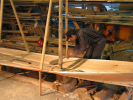
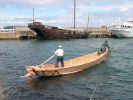
Mr. Ando and I finished the shimaihagi in about six weeks of work. I completely documented the lines, and recorded all of his dimensions and ratios. Mr. Ando conducted a brief Shinto ceremony and the boat was launched in front of the Michinoku Museum. It is now a part of the museum's collection and is occasionally used for special events. In 2005 I finished a book manuscript detailing how this boat was built. It is due to be published in Japanese and I am also hoping to publish it in English.
© Copyright Douglas Brooks, 2007 - 2018. All rights reserved

